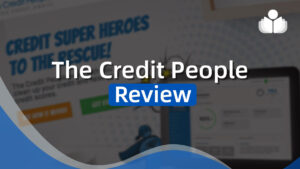Far too many small/new nonprofits think of fundraising in the context of an activity, but a Fundraising Plan is not the equivalent of “Let’s Put On A Play….”
For those of you who don’t recognize the Mickey Rooney reference, the phrase is the equivalent of “let’s do a fund-raiser,” the kind of thinking that does more to harm an organization than it does to help.
A fund-raiser is a stand-alone activity that tends to be a one-time event, an event that’s not part of a plan to ensure the continuation/survival of an organization.
Fundraisers, where they may generate needed income in the short term, tend not to lay the groundwork for future fundraising. They take a lot of work, work that can rarely be built upon for the future.
Of course, we do recognize that many small/new nonprofits don’t (yet) have a base of support that can be counted on over the long term, and quick fixes are necessary.
However a fundraising/development plan, by definition, considers future financial needs. A Plan, when properly researched, constructed, and followed, provides confidence and assurance that an organization will be able to continue to provide needed services to its constituents.
The basic focus of a Plan is the people who do and will care enough about what the organization does for them and others that they are likely to become donors.
I emphasize the above as a reminder that people give to satisfy their own needs, not (necessarily) the needs of the organizations they support.
And, since 80% of all contributed funding from individuals is in the form of “major gifts,” the people on whom you should be focusing are those who are potential major donors.
So, the first step in the creation of a fundraising plan is the identification of those people who can help you the most … and are likely to do so, if properly motivated.
Please, do not just make up a list of everyone you think has lots of money. Limit your list to those to whom you have (or someone close to you has) or can get access. Then note how you have access, and “research” what it is that is of interest/meaning to each of those individuals.
The next step is to look (creatively) at what your organization does or can do to make those people see you as a way to satisfy their needs – keeping in mind that it’s not always your mission, programs, activities, and the people you serve that would engender their interest.
Once you have the above information, the creation of a Plan would involve how you are going to convince/educate those individuals that they can get what they need by supporting your organization.
=-=-=-=-=-=-=-=-=-=-=-=-=-=
Have you heard about
The Fundraising Series of ebooks?
They’re easy to read, to the point, and inexpensive ($1.99-$4.99)
This posting is a sample of what’s addressed in the series.
=-=-=-=-=-=-=-=-=-=-=-=-=-=
Have a comment or a question about starting, evaluating
or expanding your fundraising program?
AskHank
=-=-=-=-=-=-=-=-=-=-=-=-=-=
We’ve been posting these pieces for the last five years,
and we welcome your questions/problems.
They are likely to engender further discussion.
Look forward to hearing from you.
Comments & Questions
=-=-=-=-=-=-=-=-=-=-=-=-=-=
If you’re reading this online and would like to comment/expand on the above piece, or would just like to offer your thoughts on the subject of this posting, we encourage you to “Leave a Reply.” If you’re reading this as an email, and you want to comment on the above piece, email Comments to offer your thoughts. Your comments, with appropriate attribution, could be the basis of a new posting.
 Sections of this topic
Sections of this topic
















